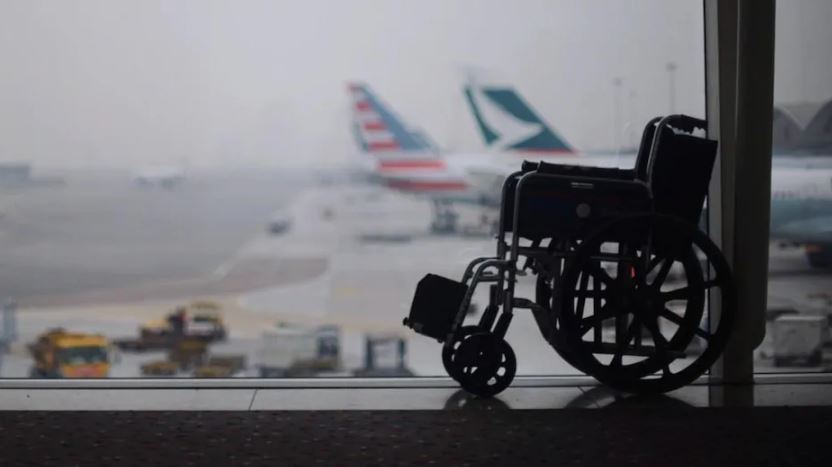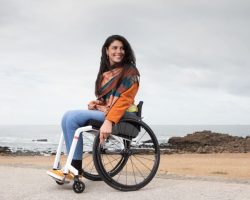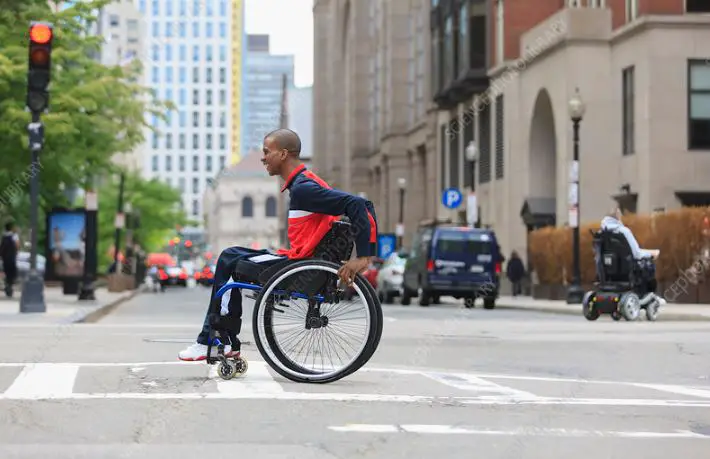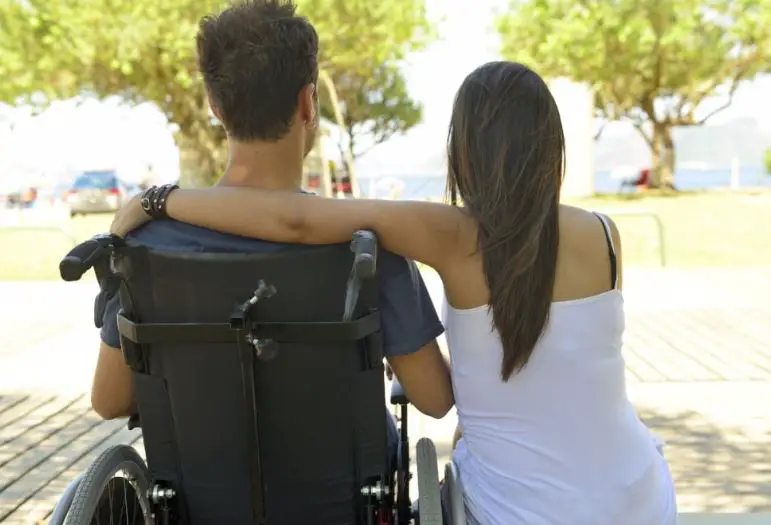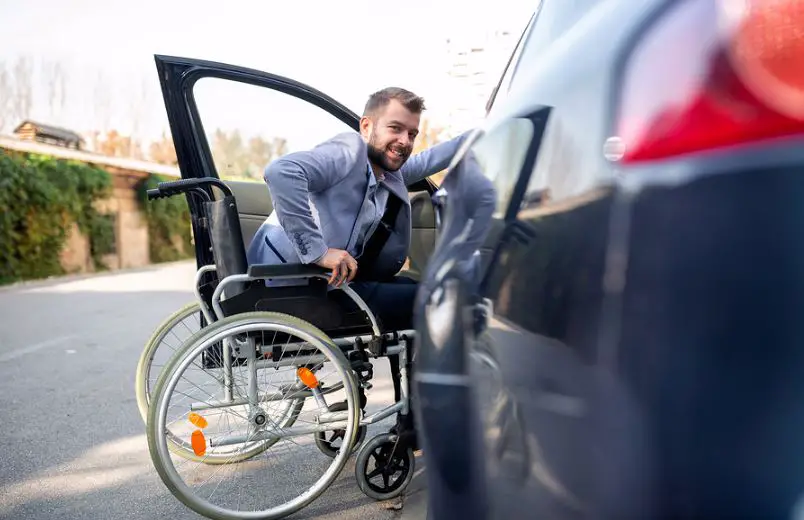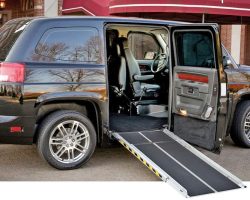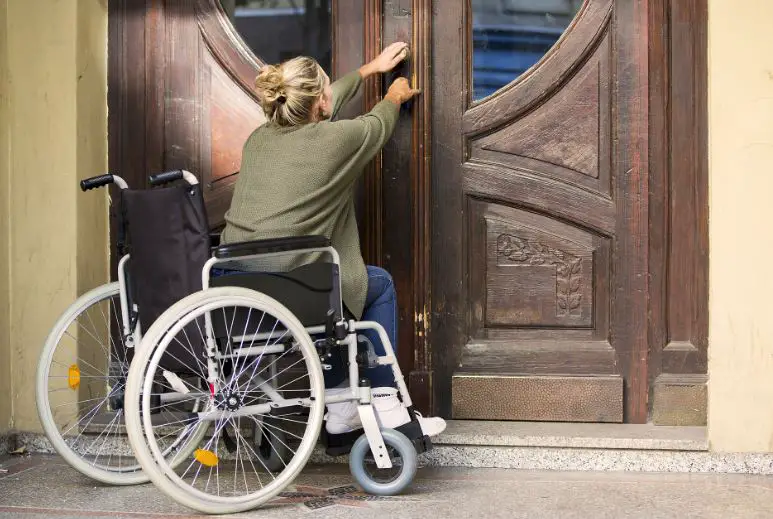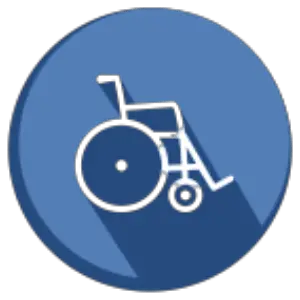This post may contains affiliate links.
This means I will make a commission at no extra cost to you should you click through and make a purchase.
- How To Travel By Plane On A Wheelchair
- Tips When Boarding A Plane With Your Wheelchair
- Are There Countries I Can’t Travel To In A Wheelchair?
- Can I Fly With My Electric Wheelchair?
- Is it Expensive To Travel In A Wheelchair?
- What If I Am Not Allowed To Pre-Board The Plane?
- What If My Wheelchair Is Damaged In Transit?
Air travel is one of the best, easiest, fastest, and most convenient ways to travel the world. Sometimes, you don’t just know if you can travel on a plane as a wheelchair user.
Fortunately, wheelchair users can travel by air to whatever destination of their choice.
You should know that if you are in a wheelchair, you can travel to wherever you want as long as your travel documents and other immigration papers are in order.
Disabled people and other wheelchair users even have the right to pre-board the aircraft before all other passengers. You should check this report from Air Carrier Access Act (ACAA) for more information on pre-boarding a plane from your wheelchair.
The thing is that not all planes are wheelchair-friendly.
Buses, trains, parks, and even beaches have made changes and other modifications to their layout to accommodate wheelchair access, but airplanes can traveling on a wheelchair look like hard work.
The purpose of this blog post is to guide you on how to have a comfortable journey if you are traveling by air in your wheelchair.
In this guide, we are going to walking you through everything you need to know before you can travel by air in a wheelchair. Every detail on this page will help you understand how to board a plane in a wheelchair.
How To Travel By Plane On A Wheelchair

Traveling is a thing of joy to most people, and there are a lot of things you need to put in place before you can fly in a wheelchair.
Flying in a wheelchair has a lot of complications since airplanes aren’t meant for wheelchair passengers or designed to be wheelchair accessible.
This means you may not get the 100% comfort enjoyed by other passengers traveling with you.
I will not bore you with the entire visa application or flight booking process.
But ensure that you review the policies provided by your preferred airline regarding passengers with disabilities before purchasing a plane ticket.
Always remember that the A.C.C.A. prevents discrimination based on disability. It applies to all US airlines and flights on foreign carriers that fly into or out of the United States.
The Department of Transportation ensures the guidelines provided by the Air Carrier Access Act are enforced nationwide.
Get to the airport extra early so you can pre-board the plane and even get the best seat on the plane.
Once you have arrived at the airport, the first thing you must do is to remind your airline that you need wheelchair assistance for the flight.
When you get to the airport, talk to an airline staff concerning your condition to get help boarding the plane.
You can also request to pre-board the plane. Passengers with disabilities can request pre-boarding and will be allowed to board the plane before other passengers.
The pre-boarding process is a safety criterion that allows people with disabilities the additional time or assistance they need to get to their seats
Get to the gate, explain to any of the staff that you are physically disabled, and want to pre-board.
The Air Carrier Access Act (A.C.C.A.) states individuals with disabilities are to board “before all other passengers, including first-class passengers, elite-level passengers, and members of the military, passengers with small children….”
In some EU countries, the UK, Australia, and India, disabled travelers may not be allowed to pre-board the plane but wait at the aircraft gate.
Some airlines won’t allow you to board the plane with a power chair, you’ll be transferred to an airport manual chair and your wheelchair would be transferred to the cargo bay.
If your chair is valuable, sensitive, or delicate, you may board the plane with it. You would be transported to a high-backed chair with security straps located close to the tail of the plane.
If you encounter any access problem at the airport and the airline cannot resolve it, request to speak with the Complaint Resolution Official.
Every air carrier is required to have a complaint resolution official on-site or by phone to help you solve any issue you may encounter.
If you are a wheelchair user traveling by plane, one of the most important gadgets you should take along with you is your memory foam or gel cushion.
Airplane seats are designed for “the average person” and not wheelchair users.
If you use a wheelchair or scooter, you won’t have the best experience with airplane seats. You should bring an extra-cushion if you want to enjoy your flight. We recommend the ATEPA Self-Inflating Insulated Seat Cushion.
Once you arrive at your destination, there will be standby staff that will assist you in exiting the plane.
Tips When Boarding A Plane With Your Wheelchair
Here’s a summary of the important stuff you should know as a wheelchair user traveling by air.
- Inquire to know if the aircraft you are boarding has an onboard wheelchair or wheelchair-accessible restroom to aid passengers with disabilities.
- Arrive at the airport extra early so you can pre-board the plane or get the best seat.
- Make sure you attach a name tag or sticker to your wheelchair containing your name and phone number.
- If you use a special or delicate wheelchair, write a note that will guide the airline staff on how to handle your wheelchair to prevent damages.
- Carry as little luggage as possible. There are lots of rolling suitcases that can be attached to a wheelchair.
- Examine your wheelchair for damages after arrival if you could not board the plane with it. If it was damaged, take photos and file for compensation.
- The low pressure in the plane’s cargo bay can deflate your wheelchair tires; make sure you carry a portable wheelchair tire inflator.
- If you use an electric chair, remove your joystick and carry it in your luggage because the joystick is the most important and fragile part of the wheelchair.
Are There Countries I Can’t Travel To In A Wheelchair?
As long as all your documents are in order, you can travel to wherever you want in your wheelchair. No country has a ban on wheelchair travel or restricted the movement of people in a wheelchair.
However, there are a lot of countries that are not wheelchair-friendly.
You should check if the place you are traveling to is wheelchair-friendly before you travel or check out our guide on wheelchair-friendly cities in the USA.
Can I Fly With My Electric Wheelchair?
According to the FAA, you can travel with a power chair, electric wheelchair, or any mobility scooter. You only have to check for a non-spillable wet battery so you can.
You are advised to remove the batteries in your wheelchair, seal them, and transport them in a separate container to prevent the batteries from short-circuiting when they are onboard.
You should also check out this awesome resource from BHTA on air travel and power chairs.
Is it Expensive To Travel In A Wheelchair?
It is more expensive to travel as a wheelchair user whether you are using a plane or bus.
Traveling by air as a wheelchair user is expensive, and they may charge you more than other passengers in the same aircraft.
Some airlines may even count your chair and other assistive devices as luggage and make you pay for transporting it. That’s sad, but don’t let that deter you from traveling and enjoying yourself.
What If I Am Not Allowed To Pre-Board The Plane?
The right to pre-board a plane before other passengers is a civil right enjoyed by disabled people and wheelchair users by the Air Carrier Access Act [ACAA].
If you are disabled and meet all the requirements stated by the law, no airline can stop you from pre-boarding the plane. They are mandated to honor your pre-boarding request.
Some airlines even allow celebrities to pre-board when they request it.
Any airline that prevents you from pre-boarding the plane has violated ACAA policies and your rights as a disabled person.
If the airline denied your pre-boarding application, there’s no need to waste money filing a lawsuit, just report the violation to the Department of Transportation.
What If My Wheelchair Is Damaged In Transit?
The Air Carrier Access Act requires that airlines cover the cost of replacing or repairing a lost, damaged, or destroyed wheelchair. They also require airlines to provide loaner chairs that travelers can use while their chair is being repaired or replaced.

